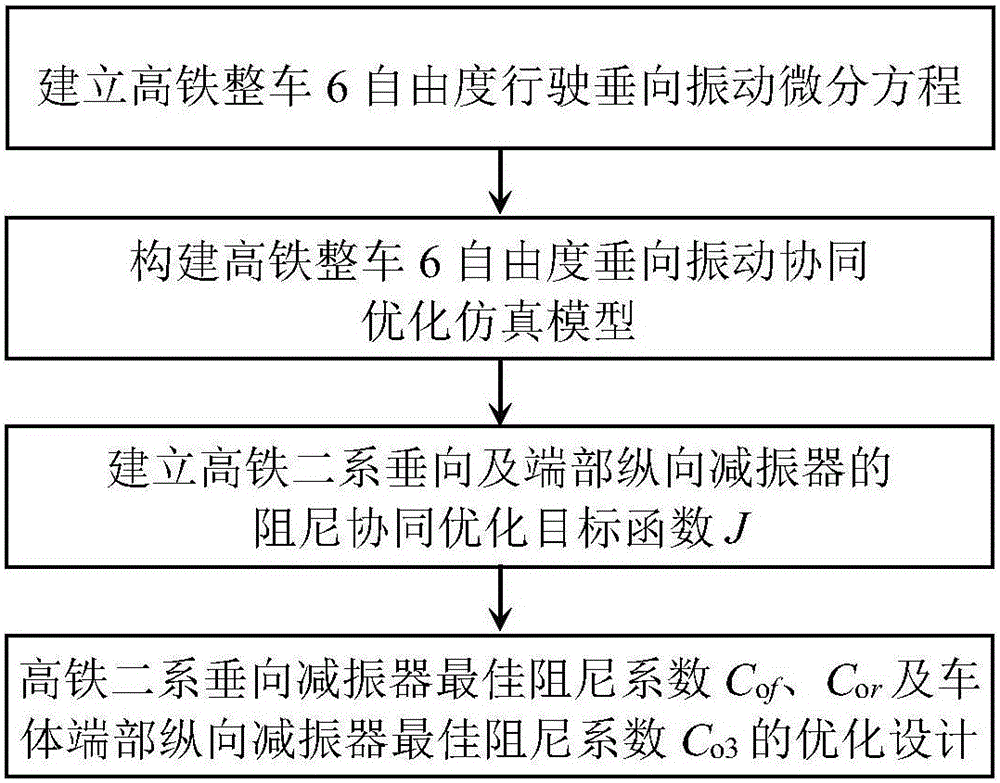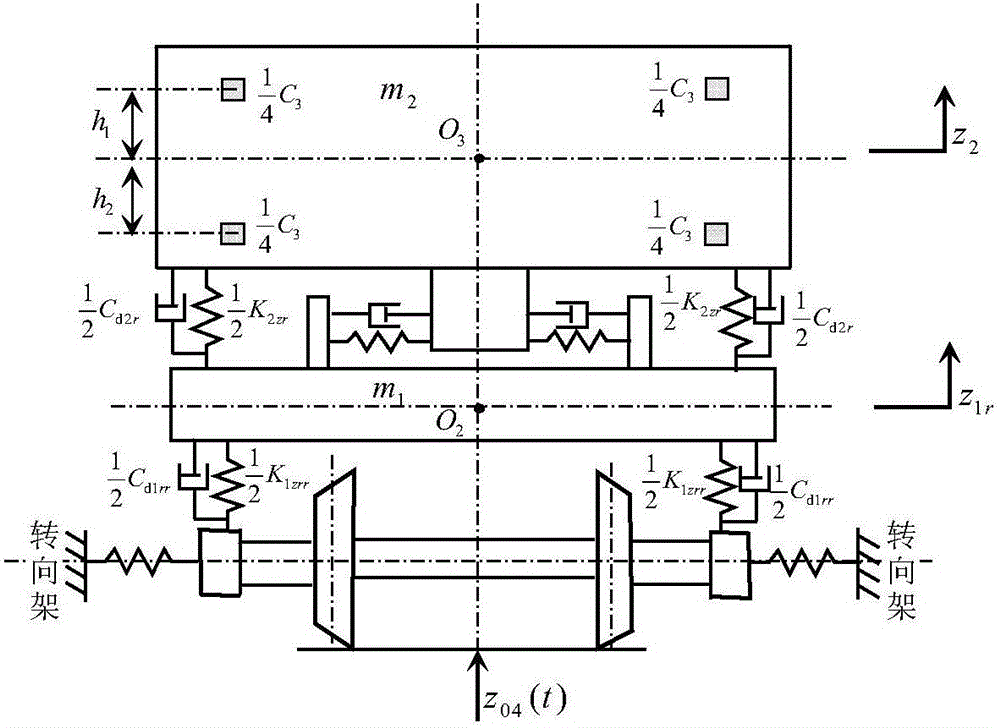Collaborative optimization method of two-line vertical and end part longitudinal damper damping coefficient of high-speed railway
An end-longitudinal and secondary-vertical technology, applied in the fields of instrumentation, electrical digital data processing, special data processing applications, etc., can solve the theoretical design method that does not give a system, the difficulty of dynamic analysis and calculation, and the inability to meet vibration reduction. device design requirements, etc.
- Summary
- Abstract
- Description
- Claims
- Application Information
AI Technical Summary
Problems solved by technology
Method used
Image
Examples
Embodiment Construction
[0032] specific implementation plan
[0033] The present invention will be further described in detail through an embodiment below.
[0034] Two secondary vertical shock absorbers are installed on each bogie of a high-speed railway, and four longitudinal shock absorbers at the end of the car body are installed between two adjacent car bodies, that is, n 1 = 2, n 2 =4; the mass m of its single car body 2 =63966kg, nodding moment of inertia J 2φ =2887500kg.m 2 ; Mass of each bogie frame m 1 =2758kg, nodding moment of inertia J 1φ =2222kg.m 2 ;The vertical equivalent stiffness K of the front suspension of the front bogie 1zff =2.74×10 6 N / m, vertical equivalent damping C d1ff =28.3kN.s / m, the vertical equivalent stiffness K of the primary rear suspension of the front bogie 1zfr =2.74×10 6 N / m, vertical equivalent damping C d1fr =28.3kN.s / m; The vertical equivalent stiffness K of the primary front suspension of the rear bogie 1zrf =2.74×10 6 N / m, vertical equivalent ...
PUM
 Login to View More
Login to View More Abstract
Description
Claims
Application Information
 Login to View More
Login to View More - R&D
- Intellectual Property
- Life Sciences
- Materials
- Tech Scout
- Unparalleled Data Quality
- Higher Quality Content
- 60% Fewer Hallucinations
Browse by: Latest US Patents, China's latest patents, Technical Efficacy Thesaurus, Application Domain, Technology Topic, Popular Technical Reports.
© 2025 PatSnap. All rights reserved.Legal|Privacy policy|Modern Slavery Act Transparency Statement|Sitemap|About US| Contact US: help@patsnap.com



